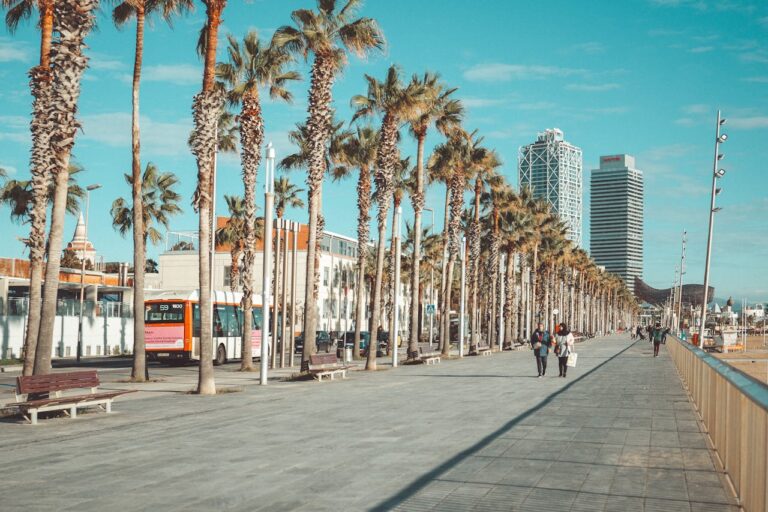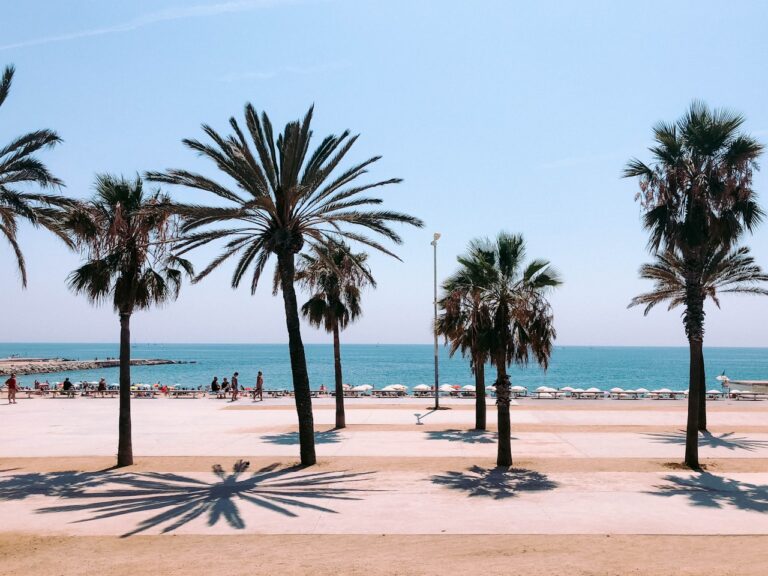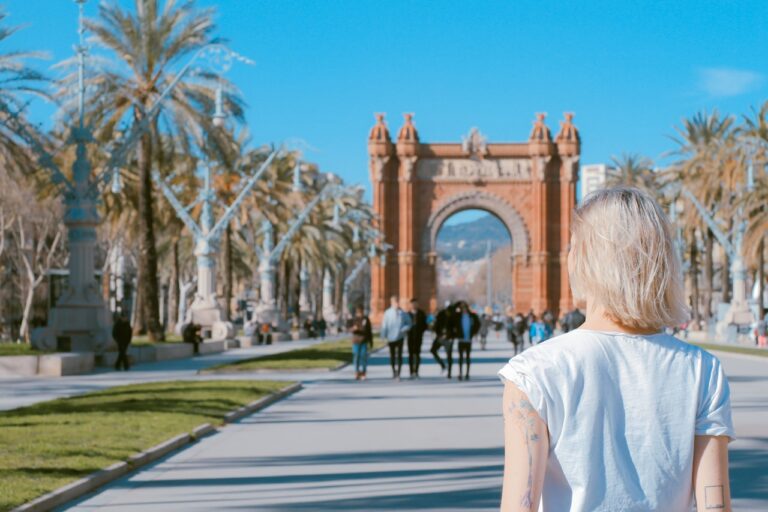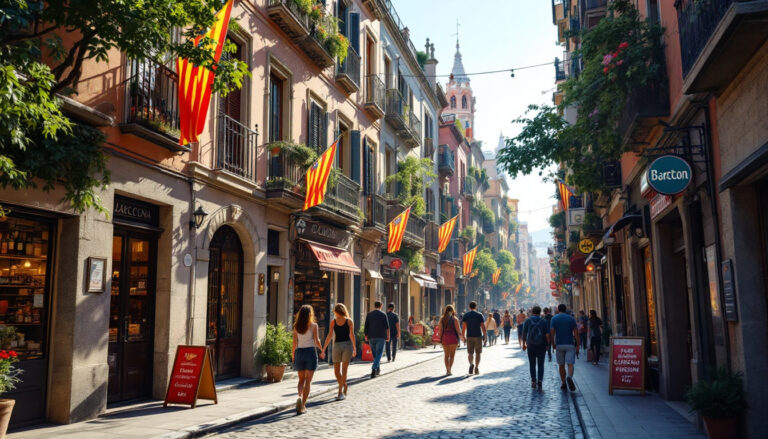
Barcelona
Barcelona in Spain combines Mediterranean charm with architectural wonders, offering you a perfect blend of culture, cuisine, and coastal beauty.
This guide presents expert advice for exploring the capital of Catalonia, with accurate information on attractions, dining options, and practical Barcelona travel tips.
Experience Barcelona’s Architectural Marvels
Antoni Gaudí’s masterpieces define Barcelona’s skyline and provide you with unforgettable visual experiences. The Sagrada Família, still under construction since 1882, showcases intricate facades and towering spires that draw approximately 4.5 million visitors annually.
Park Güell offers panoramic city views from its mosaic-covered terraces, while Casa Batlló and Casa Milà demonstrate Gaudí’s revolutionary design concepts through organic forms and innovative structures.
Gothic Quarter streets contain buildings dating back to medieval times, including the Barcelona Cathedral with its 14th-century cloister. The district presents a contrast to Gaudí’s modernism through narrow passages and stone facades that transport you to Barcelona’s historical periods.
Savor Catalan Culinary Traditions
Barcelona’s food scene centers on Mediterranean ingredients prepared according to local traditions. Markets such as La Boqueria provide fresh seafood, produce, and regional specialties daily, serving both home cooks and professional chefs from 8:00 AM to 8:30 PM most days.
Traditional restaurants serve authentic paella, often prepared with locally-sourced seafood and saffron-infused rice. Small tapas bars offer patatas bravas, pan con tomate, and jamón ibérico in portions designed for sharing. Many establishments maintain specific dining hours: lunch typically begins at 1:30 PM, while dinner rarely starts before 8:30 PM.
Navigate Barcelona’s Distinct Districts
Each Barcelona neighborhood presents unique characteristics and attractions. Eixample features grid-patterned streets lined with modernist buildings and upscale shopping options. El Born combines medieval architecture with artisan shops and trendy cafés within walking distance of the Picasso Museum.
Barceloneta connects you to the Mediterranean with its 1.6-kilometer beach, seafood restaurants, and maritime atmosphere. Gracia, once an independent town, maintains a local feel with small plazas and independent businesses away from major tourist areas.
Practical Information for Your Visit
Barcelona experiences mild winters (average 10°C/50°F) and warm summers (average 26°C/79°F), making April-June and September-October ideal for comfortable sightseeing. The T-10 transport card provides ten journeys on public transportation for approximately €11, covering buses, metro, and local trains.
Museums typically close on Mondays, while many shops observe a midday closure between 2:00 PM and 5:00 PM. Spanish is widely understood, but learning basic Catalan phrases demonstrates respect for local culture and often enhances interactions with residents.
Day Trips from Barcelona
The surrounding region offers diverse experiences within short travel distances. Montserrat, located 60 kilometers northwest, features dramatic mountain formations and a Benedictine monastery housing the Black Madonna statue. Trains depart hourly from Plaça Espanya station, with the journey taking approximately one hour.
Coastal towns such as Sitges (35 minutes by train) provide beautiful beaches and a charming old town. Wine regions including Penedès, 40 kilometers southwest, welcome visitors for tours and tastings of cava, the Spanish sparkling wine produced through traditional methods.



